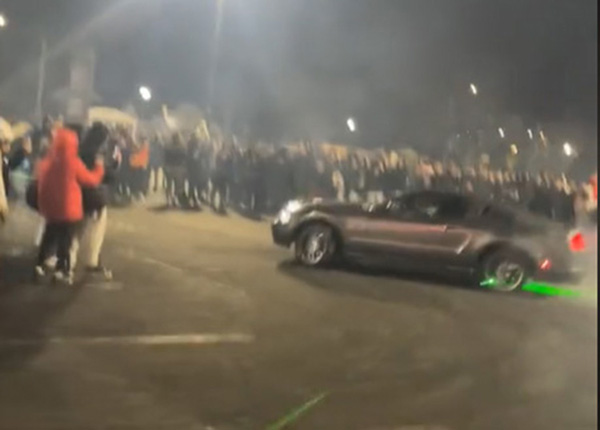By Earl Ofari Hutchinson
Contributing Columnist
On three different occasions I have witnessed in a street takeover.
The first time it was a block from my house. It was a Sunday night near midnight. I went to the corner where the crowd of 300 to 400 people had gathered.
I asked some of the participants why they were there, and did they know or care that they were disturbing the residents and presented a clear and present danger to motorists. They gave me a blank look.
The second time I witnessed the tail end of the deadly street takeover near Florence Avenue and Crenshaw Boulevard that claimed the life of a motorist passing by at the time.
The third time I publicly challenged the Los Angeles Police Department, the Los Angeles County Sheriff’s Department and the California Highway Patrol to make their street takeover task force permanent.
The perplexing question which in one case went unanswered by the participants and that has confounded law enforcement, public officials and community residents is why street takeovers not only happen but seemingly have gotten bigger, bolder and more in the face of the community and law enforcement in the past year? The other equally perplexing question is what can be done about them?
The starting point to answer question one is just who the individuals are involved in street takeovers and why. There has been no detailed profile of the typical street takeover participant or their motive for participating.
From my observation, they are mostly young, comprised of all ethnicities and even genders, and treat the street takeover as part thrill, part happening, part sense of momentary empowerment and almost certainly part defiance of authority.
Certainly, it is thrill seeking taken to the extreme, since there is also a sense, maybe even an expectation of an accident, injury or — in extreme cases — death. Social media has made it simple for individuals to gather at a designated street corner at a designated time once the word gets out.
In the two street takeovers I directly observed, I was struck by how fast the crowd gathered at the location, and how fast they dispersed the moment the police showed up. This made it more difficult for law enforcement to quickly intervene with arrests and the impounding of vehicles.
The specially trained task force that cracked down on the takeover at Century Boulevard and Western Avenue in South Los Angeles used a combination of intelligence information to quickly arrive at and then surround the scene. Then it followed with targeted impounds and arrests.
At least for that moment, it had a sobering effect and sent a strong message that law enforcement had finally developed a tactic to combat a takeover with the proviso that it could get ahead of the mob.
Street takeovers are certainly not new. Young people and car enthusiasts have had a long tradition in Los Angeles of commandeering a street and showcasing their souped-up vehicles in showboat promenades and Riverside 500-type speed racing, stunts and reckless driving displays.
The goal was always to provide entertainment and cheap thrills for the spectators. In times past, public officials and law enforcement bowed to the popular craze and tried to provide designated open space areas and lots away from residential neighborhoods for the show boaters and participants.
There was mixed success with this tactic. This of course for many paled in comparison to taking over a street and the subsequent sense of defiance and faux empowerment that comes with that.
The one other factor that helps to understand why street takeovers have cropped up to be the new sport of thrill seeking is the cultural dynamic. Once a deviant act is embraced by numbers of bored, alienated and rootless young persons, it takes on a dynamic of its own and becomes embedded in the subculture. That ensures that hundreds of people will quickly embrace the call to show up at a location for the action.
There have been numerous efforts by state legislators to enact measures to combat takeovers. They include tougher sentences for those arrested, the permanent impounding of vehicles, stiff fines, imploring community residents to promptly report a street takeover and reconfiguring street corners with barriers and speed prevention bumps. Those measures have had varying degrees of success in areas outside of South L.A.
That success has proven to be a double-edged sword. It has made South L.A. even more vulnerable and a target for street takeovers.
The feeling among many is that law enforcement will be more lax and slower to respond in South Los Angeles. This is the exact reason law enforcement, in tandem with the community, should respond even faster to the first sign of a takeover gathering in South L.A.
A swift, tough, proactive early warning crackdown is the best answer to those who think South L.A. is a soft target for wreaking their dangerous and offensive brand of vehicle and community mayhem. The message then is takeover the takeovers and end them once and for all.
Earl Ofari Hutchinson is an author and political analyst. His latest book is “How Trump Wins” (Middle Passage Press). He also is the host of the weekly Hutchinson Report on KPFK 90.7 FM Los Angeles and the Pacifica Network Saturday at 9 a.m.












